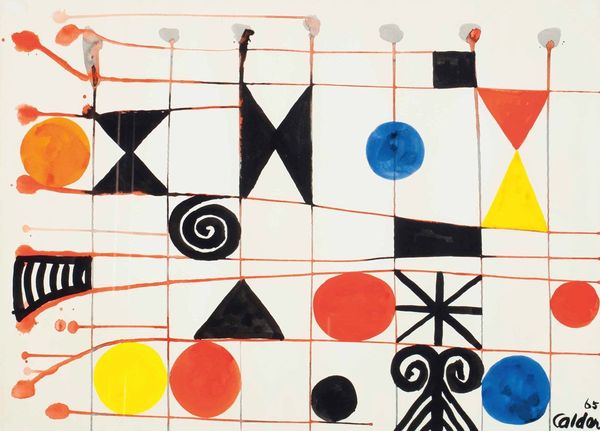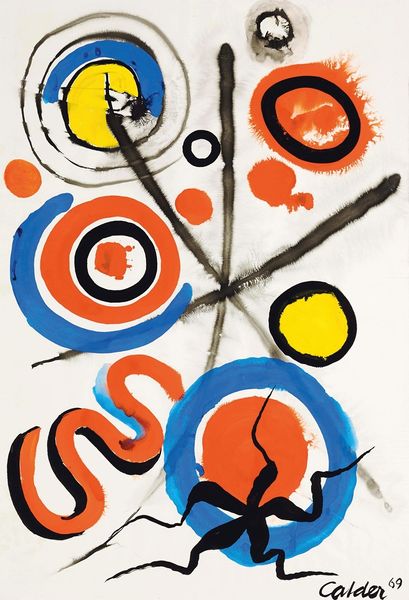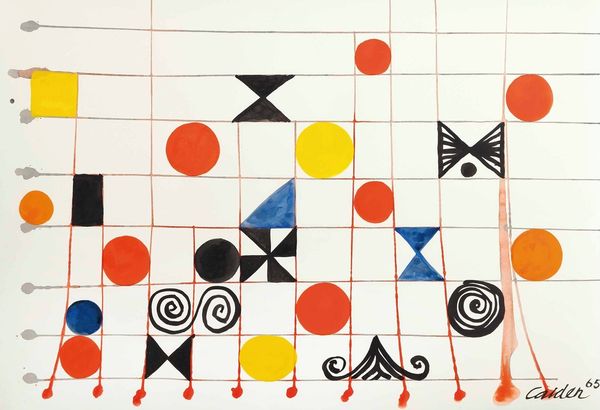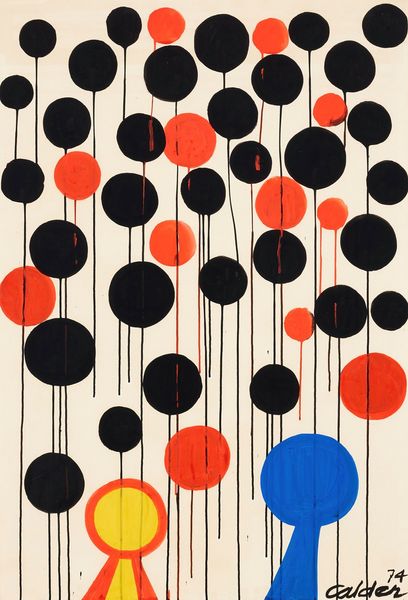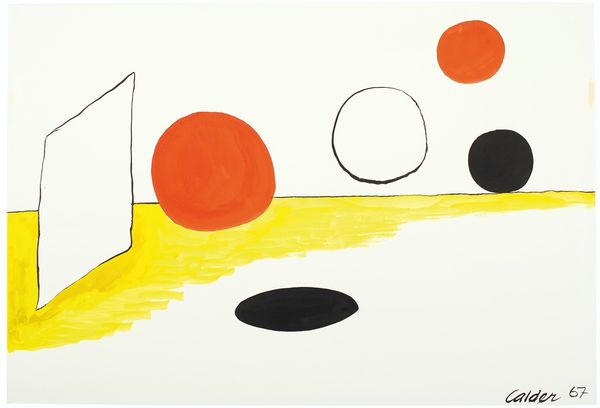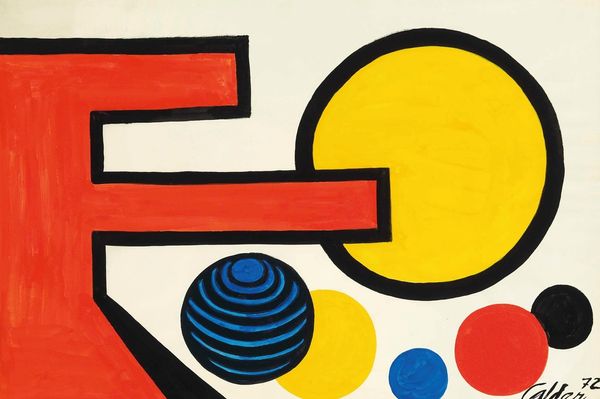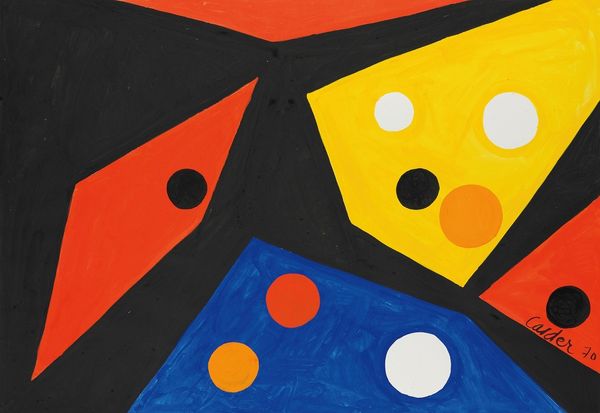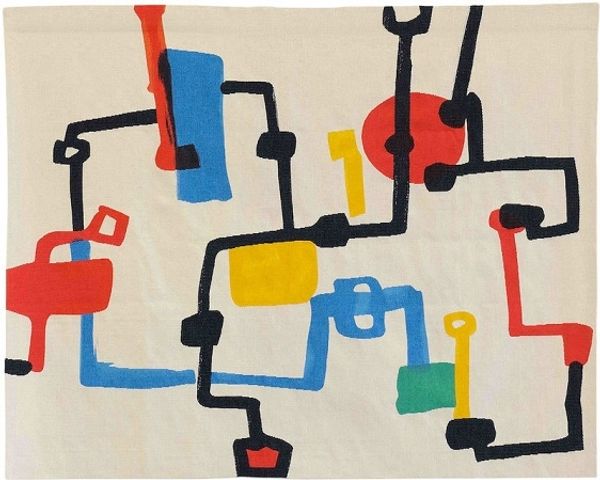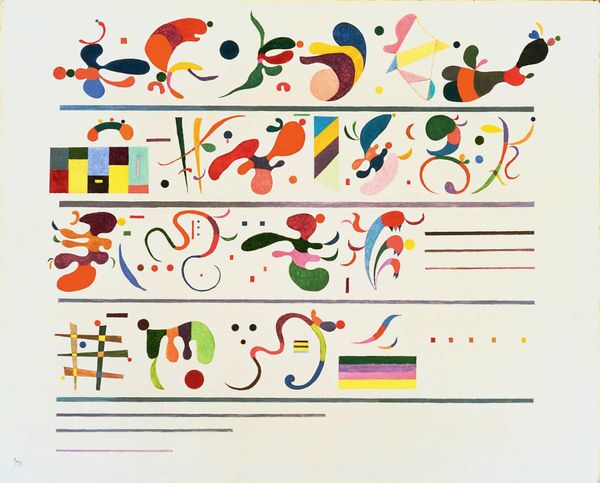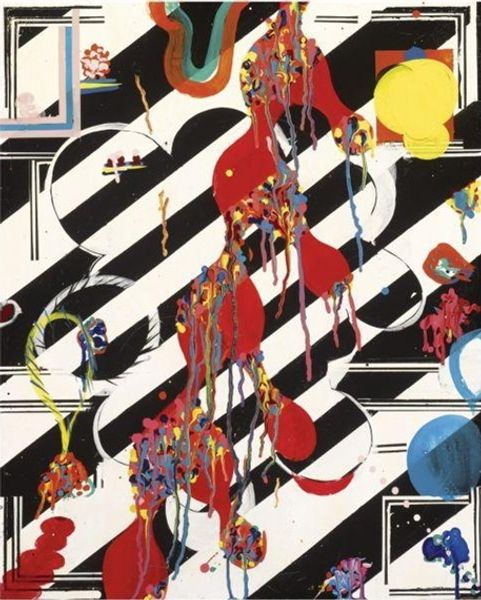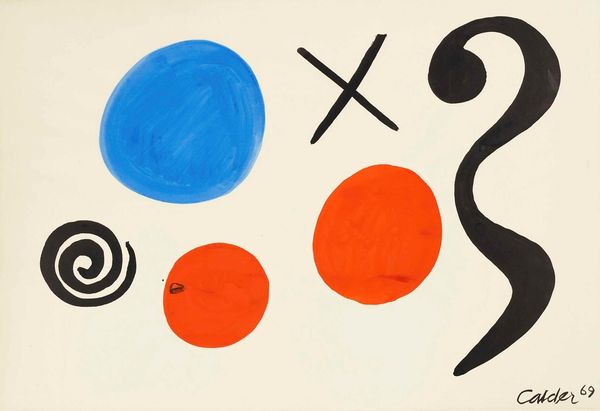
print, acrylic-paint
#
popart
# print
#
acrylic-paint
#
abstract
#
geometric
#
geometric-abstraction
#
pop-art
#
modernism
Copyright: Modern Artists: Artvee
Editor: Here we have Alexander Calder's "Snakes" from 1970, rendered in acrylic paint as a print. The interplay of vibrant geometric forms—circles, squares, lines, and spirals—dancing around the sinuous snake figures makes me curious. What do you see in this piece beyond its apparent simplicity? Curator: Formally, the artwork presents a structured exploration of pictorial space. The application of primary colors alongside black, white and brown introduces a dynamic contrast, immediately establishing figure-ground relationships. Did you notice how Calder employed vertical lines as a deliberate strategy? Editor: Yes, they seem to suspend the geometric shapes, but how do you make sense of the snakes amidst these abstract shapes? Curator: The snakes disrupt the geometric rigidity, introducing organic form that is playfully self-aware. Through this contrasting dynamism, Calder instigates a compelling visual game, demanding our interpretive engagement. Editor: The interplay between the geometric shapes and the serpentine lines makes more sense to me now. Do you think that contrast also references earlier styles of Abstraction, say Constructivism? Curator: Absolutely, you are seeing precisely the kind of relational tension Calder explores. But also note Calder has moved on by incorporating biomorphic elements to expand its visual language beyond mere shapes and structure, gesturing toward popular tastes of the 1970s. Editor: I see! The strategic composition and colour choices reveal a delicate dance between abstraction and organic form. Thank you! Curator: Indeed! And it is in that deliberate friction, the conscious arrangement, that we find the lasting appeal of Calder's print.
Comments
No comments
Be the first to comment and join the conversation on the ultimate creative platform.
